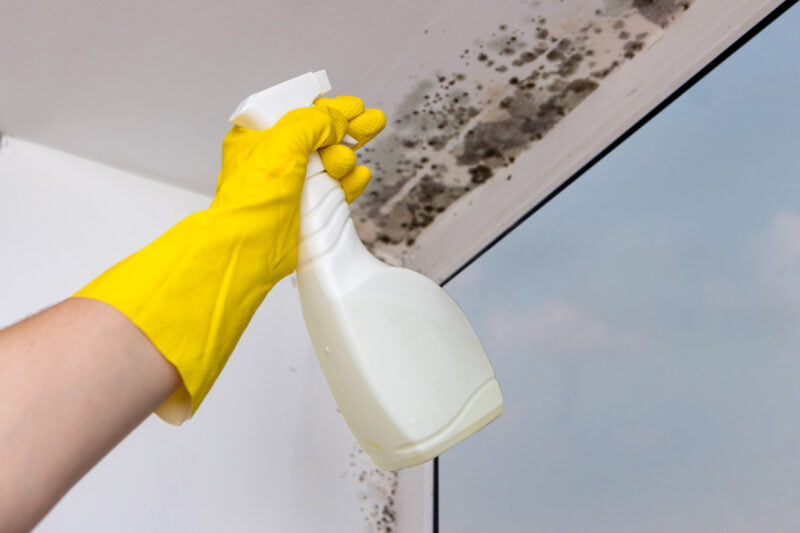Did you know that it’s super common for mold to grow in homes and buildings? If you want to learn about the symptoms of mold, we can help.
In this guide, we’ll go over the signs of mold you should watch out for in your home.
Want to learn more? Keep reading.
1. Dark Grout in the Shower
Mold can grow in the grout between shower tiles. Most of the time, the mold that darkens the grout isn’t harmful.
If there was a recent flooring or leak in the bathroom plumbing, you might have a different kind of problem. Sometimes, you’ll need to bring in a professional to remove the toxic mold.
2. Family Members Experience Allergic Reactions
One common sign that there’s mold in a home is if people in your household begin to exhibit allergic reactions.
Think about whether your family member’s symptoms get better after they leave the house. If you notice you feel better once you leave your home, you might have a mold problem.
Some symptoms of allergies related to mold include sneezing, coughing, and sinus headaches. Some people will develop a sore throat or a runny nose.
Others might begin to have a hard time breathing, itchy eyes, or irritated skin.
Certain kinds of household mold can cause a life-threatening illness. People end up with internal organ damage or mental impairment.
If you’re noticing people in your home are unwell and you’re suspecting you have a mold problem, call in a specialist. Check out these mold removal specialists.
3. Chronic Headaches
If you get exposed to mold, you will end up with short-term and long-term side effects. Some short-term side effects will include flu symptoms, coughing, and a headache.
If you notice you’re getting headaches more often, you should see your doctor. Your doctor can figure out if the chronic headaches are getting caused by other factors.
You should know that a mold infestation could also be behind the chronic headaches.
4. Persistent Moisture
If you notice condensation dripping from pipes or a lot of moisture on your windows, mold could grow. Sometimes, if there’s persistent moisture in your home, mold might already be growing.
You should look at getting a dehumidifier right away. The dehumidifier will help remove extra moisture in the air.
Also, with a dehumidifier, you can set the humidity at a proper level in your home. Dehumidifiers won’t fix the problem completely.
You could look at getting your windows changed to double-glazed panes. Sometimes, people end up having to re-seal their windows as well.
If you see moisture on your house pipes, call in a plumber. A local plumber might put insulation around the pipes to prevent moisture build-up.
You could also run warm-water pipes further away from cold ones.
5. Water Stains
Another breeding ground for mold is if your home flooded, a toilet overflowed, or your sewer backed up. After flooding, mold can begin to grow behind walls or below the flooring.
If you’re worried about mold, go through your home and look for discolored ceilings, floors, and walls. Any discoloration will reveal that mold’s growing.
Look out for cracks or bubbling in your wallpaper and paint. Bulging or warped walls are also signs of a mold and moisture problem. Moisture penetrated the surface of the wall, and mold can grow there.
Consider working with a professional if you notice water stains or discoloration. The professional can give you an idea of how to remove the mold.
6. Fur or Spots on Your Walls
Mold comes in many different shapes, sizes, and even textures. Sometimes, mold will appear fuzzy or a black stain. Other times, the mold will appear as orange, green, black, or brown specks.
Look for areas in your home where moisture gathers or rests. Fungus tends to thrive in damp and cool places. Search areas in your home where it’s damp, like your basement or the bathroom.
You might begin to see a pattern of stains or specks on certain parts of a room. If you see spots on the corner of your bathroom ceiling, you might have a mold issue.
7. You Get Nosebleeds Often
Some people who get frequent nosebleeds might be in a home with serious mold problems.
In severe cases, people will end up dealing with chronic nosebleeds. Most of the time, people don’t think of mold as the cause behind the problem.
If you experience chronic nosebleeds, consider seeing your doctor. Rule out any other reasons.
8. New Musty Odor
Mold can release a strange and unpleasant odor. If you notice that your home has begun to smell musty or stale, you might have mold in a particular room.
Try to walk through your house to find the area where you smell the musty odor the strongest.
If you can find the mold, make sure you remove it right away. Sometimes, mold can grow in unreachable places, like inside a wall. You will need to work with a professional to remove the mold growth.
Now You Know More About the Signs of Mold
We hope this guide on identifying mold was helpful.
Watch out for various signs of mold in your home. Look out for discolored ceilings, excess moisture on windows, and damp areas. Watch out for a new musty smell in your home.
Are you looking for more homeowner tips? Check out our resources on the blog.




